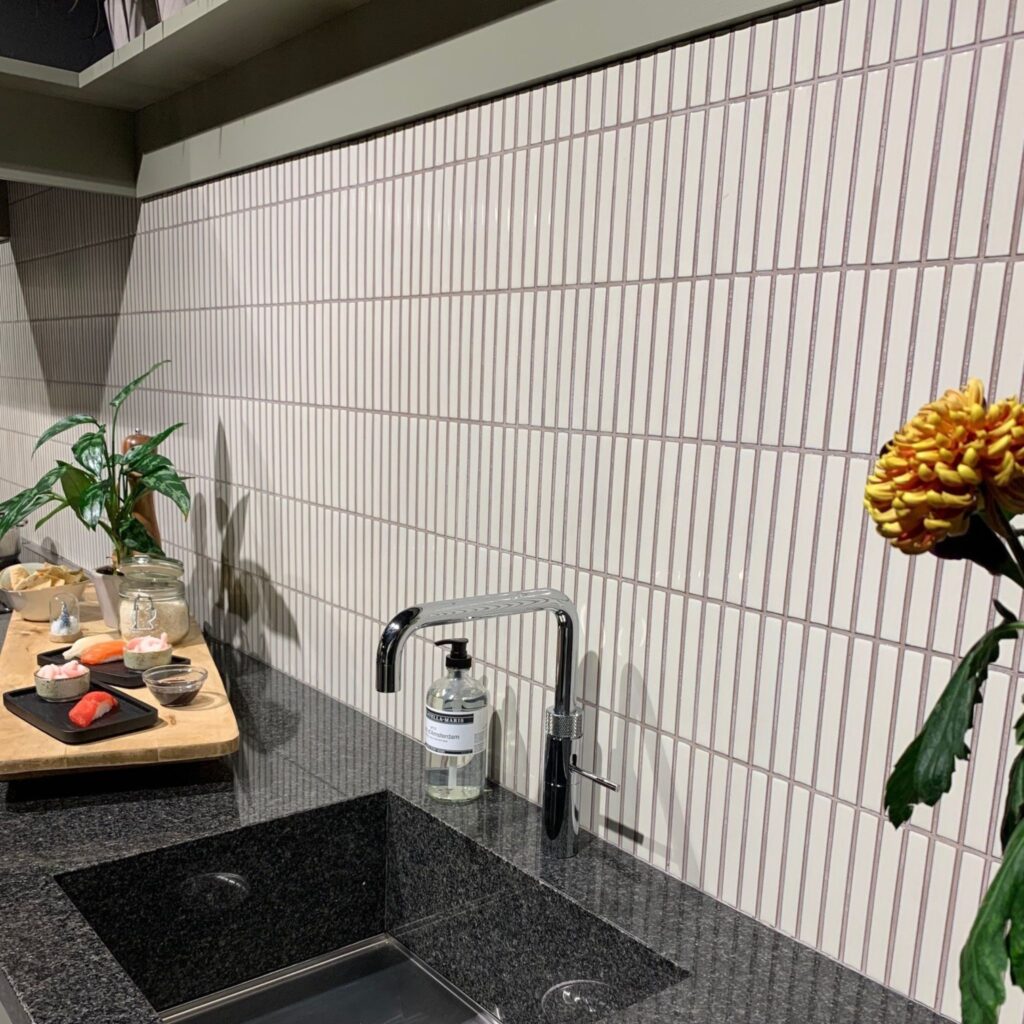Your shopping cart is currently empty!
MOSAIC TILES IN THE KITCHEN: A CREATIVE CHOICE FOR YOUR INTERIOR DESIGN
The kitchen is often the heart of the home, and it is where style and functionality go hand in hand. Mosaic tiles are an excellent way to add a personal touch to your kitchen. In this blog post, we will discuss the benefits, applications and tips for using mosaic tiles in the kitchen.
Why mosaic tiles in the kitchen?
- Visual impact: mosaic tiles come in a wide range of colors, patterns and materials. They can make a strong visual impact, giving your kitchen a unique look.
- Durability: mosaic tiles are often resistant to high temperatures, stains and moisture, making them ideal for use in kitchens. They are also easy to clean, which is a big advantage while cooking.
- Design flexibility: whether you have a modern, traditional or industrial kitchen, mosaic tiles can be incorporated into any design. They are perfect for creating a backsplash (back wall), floor or accent wall.



Applications of mosaic tiles in the kitchen
- Above the kitchen sink: a mosaic tile backsplash above the kitchen sink is not only practical but also aesthetically pleasing. This area can be a creative expression with different colors and patterns.
- Floors: mosaic tiles can be a strong foundation for your kitchen. Choose tiles that are both beautiful and functional, with non-slip properties for added safety.
- Accents and decoration: use mosaic tiles to create an accent wall or to highlight certain elements in the kitchen, such as a kitchen island.


Tips for choosing mosaic tiles for the kitchen
- Choose the right material: ceramic and glass mosaic tiles are popular for their durability and ease of maintenance. Natural stone offers a luxurious look, but may require more maintenance.
- Consider color and finish: consider the colors you want to use in your kitchen. Lighter colors can make the space appear larger, while darker shades offer warmth and intimacy.
- Patterns and textures: experiment with different patterns, such as herringbone or geometric designs. Combining different textures can also create an interesting effect.